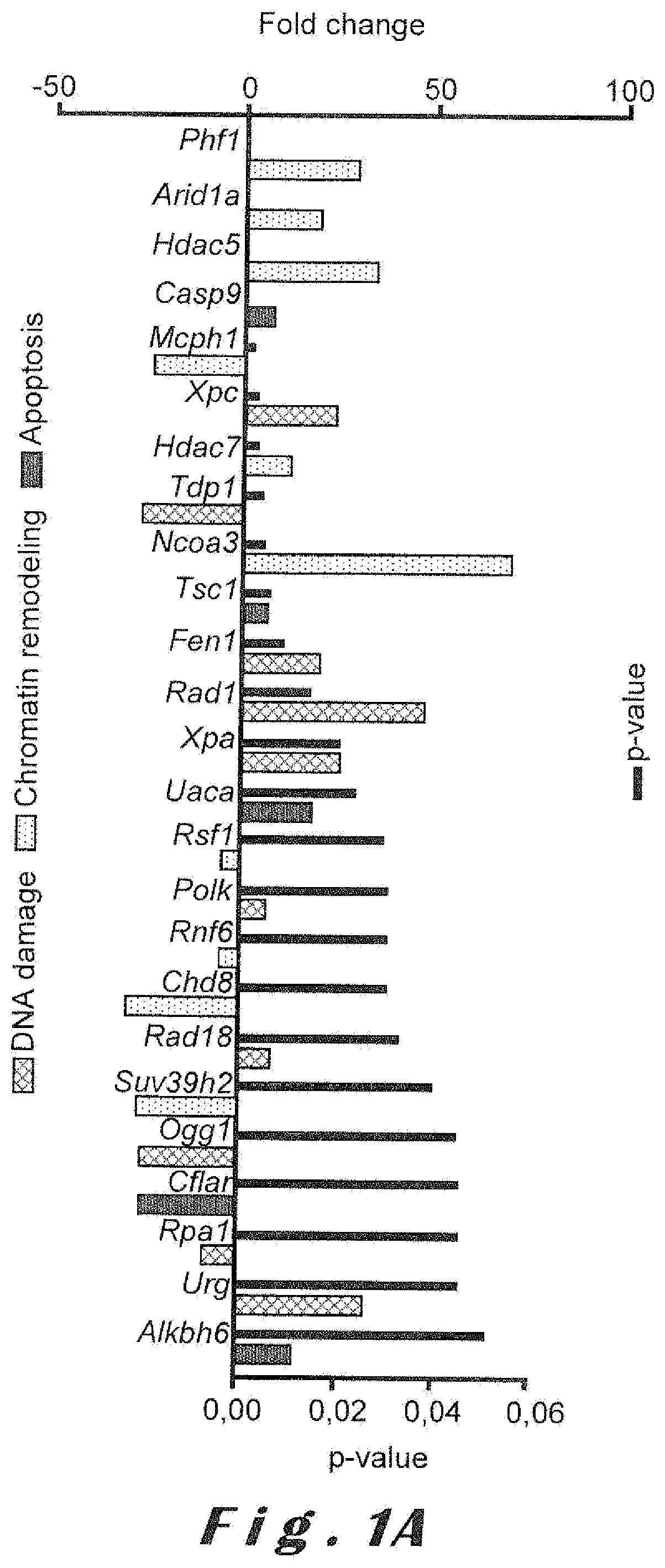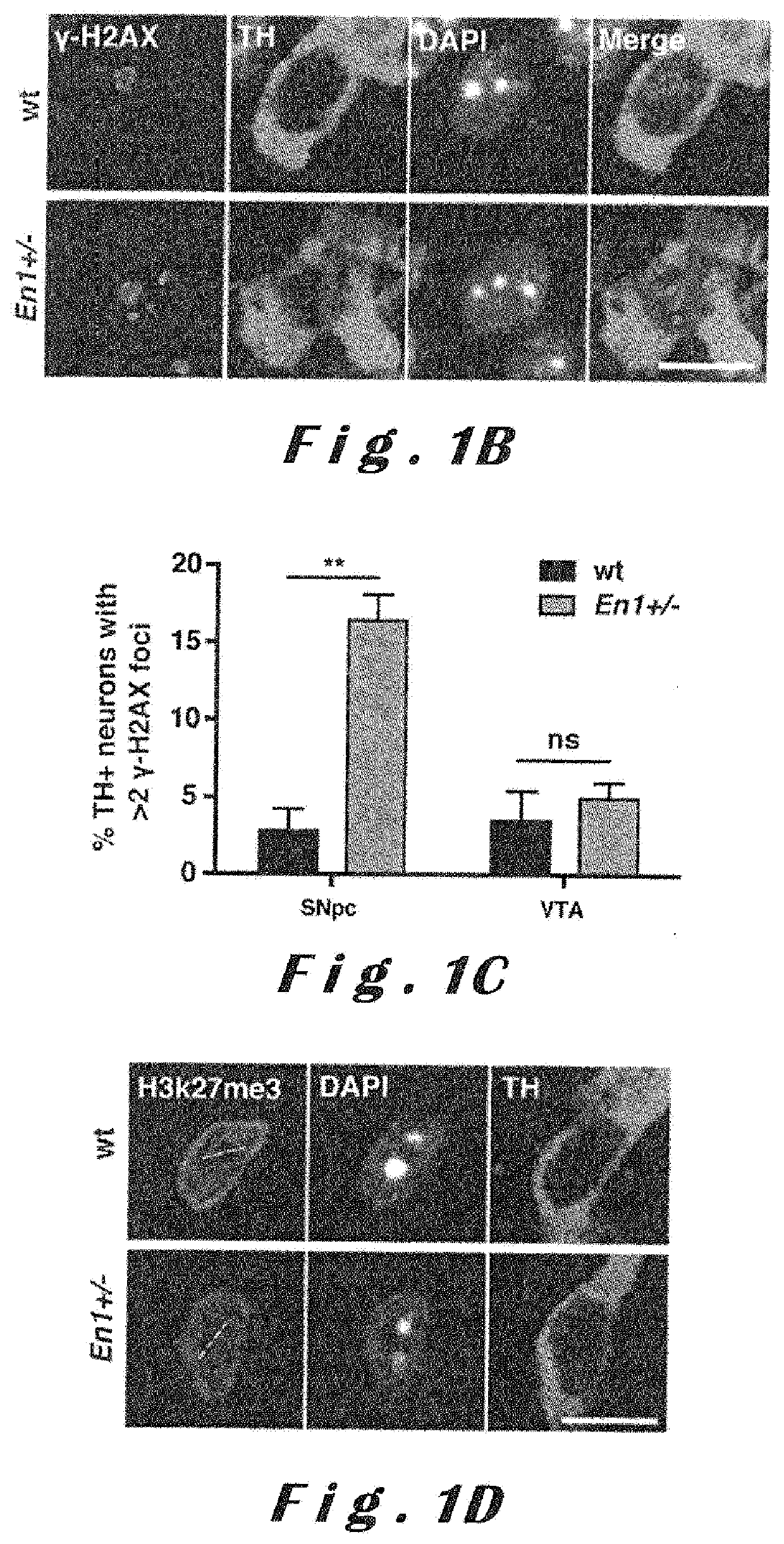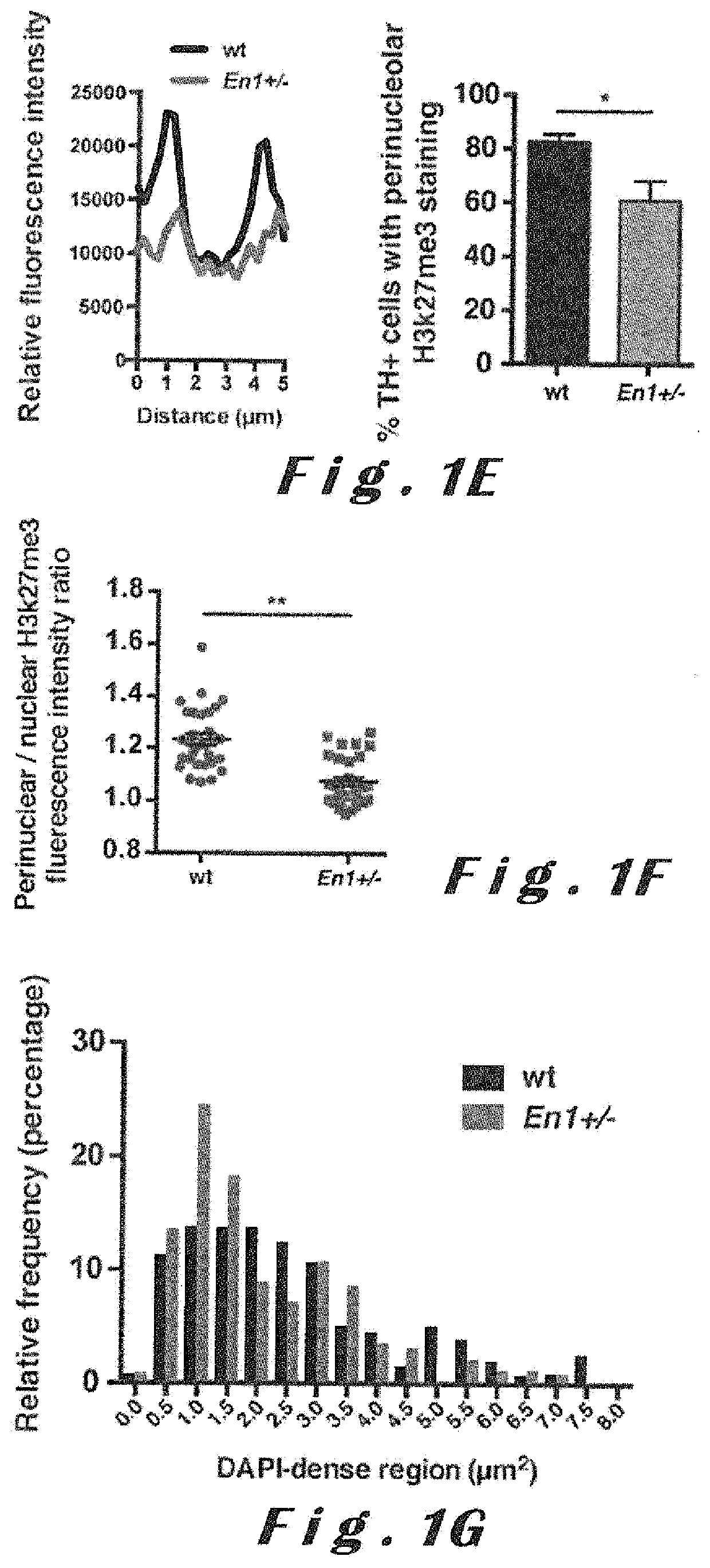Homeoproteins for use in the treatment of neurodegenerative disorders
a neurodegenerative disorder and homeoprotein technology, applied in the field of homeoproteins, can solve the problems of dna damage, cell death, cellular dysfunction and cell death, and the failure to fully understand the processes of the process remains a major challeng
- Summary
- Abstract
- Description
- Claims
- Application Information
AI Technical Summary
Benefits of technology
Problems solved by technology
Method used
Image
Examples
example 1
n Gene Expression in the SNpc of En1+ / − Mice
[0149]RNA-seq analysis on microdissected SNpc was performed in wt and En1+ / − mice. Comparable reads were obtained in wt and En1+ / − mice with 989 differentially expressed genes (p<0.05) (FIG. 6A). Analysis was performed on 6 week-old animals when all neurons are still present in the in En1+ / − - mice. Pathway Studio Ontology (Gene Set Enrichment Analysis, Pathway Studio software) indicates that the three most represented and significant groups are DNA repair (p=0.002), chromatin remodeling (p=0.004) and transcription factors (p=0.007); Cell Process Pathways analysis also revealed differential apoptosis regulation genes (p=0.01) (FIG. 6B). Genes within these ontologies and pathways were ranked by increasing p-values; FIG. 1A highlights those with significant differences in read numbers.
[0150]Transcription factors genes represent the most abundant group (FIG. 6B); FIG. 6D ranks by p-values those with modified expression in En1+ / − mice. En2 inf...
example 2
d Breaks and Modified Chromatin Marks in En1+ / − mDA Neurons
[0151]mDA neurons in the SNpc of En1+ / − mice (between 6-8 weeks of age) were examined for signs of DNA damage by following the DNA strand breaks (DSBs) marker γ-H2AX (Lobrich et al., 2010 Cell Cycle 9, 662-669). This revealed the presence of multiple γ-H2AX foci in about 16% of TH+ neurons in the SNpc (FIGS. 1B, 1C). Of note, DSBs do not necessary lead to rapid cell death as shown by the absence of significant death, in the En1+ / − mutant, between 24 and 48 weeks even though 16% of the cells have multiple γ-H2AX foci at 24 weeks (FIG. 6F). In wt mice, about 98% of mDA neurons display a single ring of γ-H2AX around the nucleolus (FIG. 1B) also present in neurons throughout the brain. In line with the lesser sensitivity of VTA mDA neurons to the loss of one En1 allele, γ-H2AX staining was similar in the VTA of wt and En1+ / − mice (FIG. 1C).
[0152]En1+ / − mice also have signs of chromatin alteration. As shown in FIGS. 1D-1F, the pa...
example 3
Sensitivity of En1+ / − mDA Neurons to Acute Oxidative Stress
[0153]An acute oxidative stress was applied to mDA neurons by injecting 6-OHDA (a superoxide producing drug specifically captured by mDA neurons) directly into the SNpc. This induced, within 6 h, the loss of 35% of the TH+neurons and the formation of multiple abnormal γ-H2AX foci in about 26% of the remaining ones (FIGS. 2A, 2B), only in the ipsilateral SNpc. Neuronal loss was paralleled by a reduction in TH protein and mRNA (En1 mRNA also) (FIGS. 7A, 7B) and the presence of numerous activated caspase-3-positive mDA neurons (FIG. 7C). Injecting 6-OHDA in En1+ / − mice led to a higher percentage of TH+ neurons with γ-H2AX foci in the 6-OHDA-injected side (51%) and to a parallel increase in the loss of TH+ neurons (60%) (FIGS. 2A, 2B). EnHD-VP64 infusion indeed leads to mDA cell death (FIGS. 8A, 8B) and to an increase in the number of γ-H2AX foci (FIG. 8C).
PUM
| Property | Measurement | Unit |
|---|---|---|
| pH | aaaaa | aaaaa |
| pH | aaaaa | aaaaa |
| thick | aaaaa | aaaaa |
Abstract
Description
Claims
Application Information
 Login to View More
Login to View More - R&D
- Intellectual Property
- Life Sciences
- Materials
- Tech Scout
- Unparalleled Data Quality
- Higher Quality Content
- 60% Fewer Hallucinations
Browse by: Latest US Patents, China's latest patents, Technical Efficacy Thesaurus, Application Domain, Technology Topic, Popular Technical Reports.
© 2025 PatSnap. All rights reserved.Legal|Privacy policy|Modern Slavery Act Transparency Statement|Sitemap|About US| Contact US: help@patsnap.com



